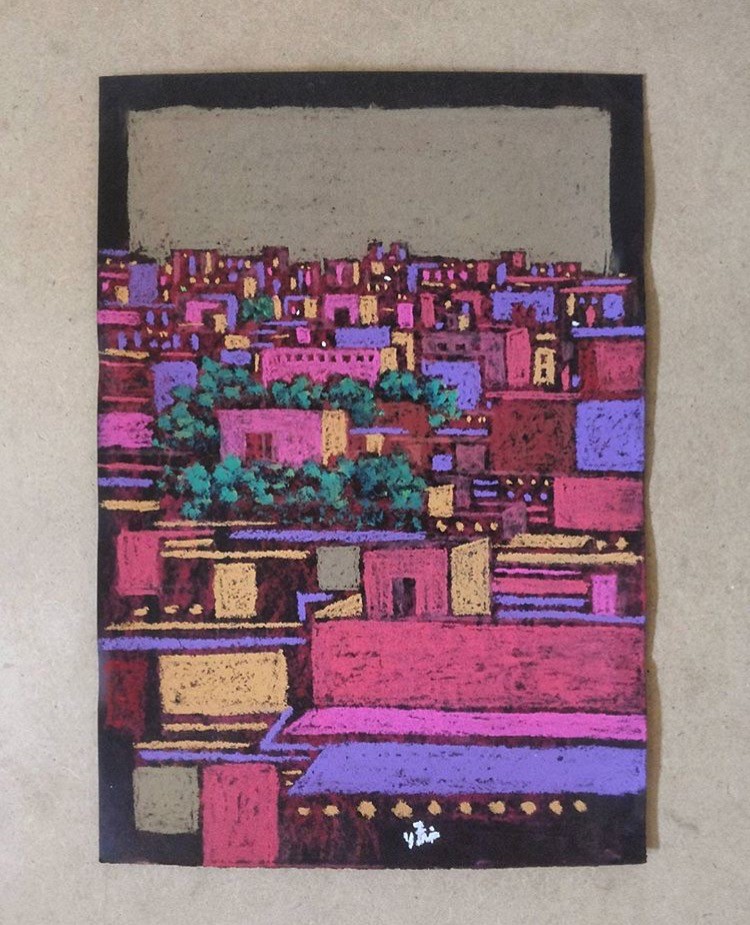Last week, the Dorothea and Leo Rabkin Foundation awarded $50,000 to New Orleans writer, artist, and curator Kristina Kay Robinson for her work in arts journalism. The 35-year old whose work in various genres has been published in the Atlantic, Elle.com, Guernica, and the Nation is one of eight writers in the country to receive the unrestricted grant.
“The intellectual and creative contributions of visual arts journalists help sustain and shape artists’ careers,” the Foundation’s website explains. “Reviews, articles, blogs, narrative videos and other forms of critical writing provide the first historical record of living arts communities.”

Dorothea’s experiences as a young, Jewish art enthusiast in Nazi Germany, Leo’s career as an artist in Manhattan, and the collection of so-called outsider art they built as a couple heavily influenced the Rabkins’ value for arts journalism. Together, these combined experiences point to the way arts institutions perpetuate political oppression by marginalizing work that challenges the popular ideologies driving the social climate.
Arts journalists present alternatives to institutional records and interpretations – pulling artists, practices, theories, and histories out of the margins to the center of discourse. In doing so, they undermine the presumed naturalness of domination – be it ethnic, racial, gender-based, economic, geographic – that is used to justify institutions’ choices to exclude certain types of art by certain types of people from the archive.
For more than a decade, Robinson has been doing just that through various media, through her writing, exhibitions, and performance art. In a recent appearance during the New Museum’s IdeasCity New Orleans, Maryam da Capita – Robinson’s alter ego – held court in a partially renovated cathedral adjacent to a middle school-turned-artist-housing-development in the historic Treme neighborhood.
Wearing a blood red jumpsuit, the lace of her bra peaking over its neckline and the tips of her blonde hair sweeping the ground, de Capita knelt before the Temple of Color and Sound, the instillation that she travels around the fictional nation of Republica which spans the Gulf Coast from Galveston to Miami. Visitors join her in meditation, conversation, and prayer surrounded by seven-day candles, roses, draped cloths, and other sacred imagery of which the Temple is comprised.

De Capita is a spiritual leader, cultural diplomat, and a socialite, who, as Robinson explains, “is famous for being famous.” She’s as likely to be offered 100 racks for a club walk-through as she is to be asked for assistance with hex reversal.
Republica, which seceded from the Union following the victory of the German Coast Uprising in 1811, is hardly a utopia. It simply is. A place of Afro-Indigenous deciding, Republica belies moralism in service of reality, albeit an alternative one.
A third-generation Xavier graduate, Robinson completed her MFA in creative writing at UNO before returning to her alma mater to teach World Literature. Concurrent with her professorship, she co-edited and independently published Mixed Company, an anthology of writing and visual art by Black and Brown women based in New Orleans.
In 2017, months before the captivity of African migrants in Libya became international news, Robinson curated “A Disappearance,” an exhibition of drawings by Sudanese artist Khalid Rahman who pulls viewers into Khartoum’s increasingly desolate landscape with his depictions of the empty homes migrants have left behind.

The time in-between her larger productions Robinson has spent writing for national and international publications, in conversation with writers and scholars around the world, and editing Antenna Works’ Room 220 which under her oversight has developed from a nascent digital publication to a consistent stream of writing and programs.
Announcing her reception of the grant, Robinson wrote on her social media, “This comes at a critical time in my artistic and writing practice.” It’s an equally critical time for the city’s cultural sector, which has been destabilized by leadership crises and internal conflict.
Last Fall, the Contemporary Arts Center and the Joan Mitchell Center saw the resignation of their directors – both amidst allegations of racial hostility toward them by staff and board members.
Patrick “Melon” Dufauchard, the city’s most popular cultural documentarian, has been charged with first degree rape, implicating a network of artists, musicians, filmmakers, and national and local publications that have continued to support his work.
A fledgling “racial justice” organization publicly protested the 100-year old Zulu Social Aid and Pleasure Club’s use of black face paint – coincidentally, on the same day that the City Council voted to not rescind their decision to site a plant in the predominantly Black neighborhood of New Orleans East.
Robinson, in an article published by the Times-Picayune in response to that protest, wrote: “It remains our right as human beings to grapple with these ideas in the way we deem intellectually and artistically fit.”
Heretofore, local publications have placed the power of narrative preservation in the hands of white journalists who have done all but grapple. While there has been an obvious increase in the amount of coverage allotted to work produced by Black artists and cultural workers, little adds critical value to the field and much of it reinforces the preeminence of the white gaze as the ultimate value marker.
With the increasing popularity of politically-engaged work, local journalists have held any artist who markets their allegiance to the Left above critique, in spite of implicit (and sometimes explicit) racism, misogyny, and regional prejudice – an incredible disservice to the culture.
As national attention focuses not only on our culture but on who is writing about culture, it is becoming difficult for publications to describe their consistent editorial decisions to almost exclusively champion white voices as anything other than what they are: institutional efforts to marginalize perspectives that bring their decision-making power into question.
Robinson’s Rabkin Foundation award may signal a necessary turning point in the shaping of New Orleans’ cultural narrative.
